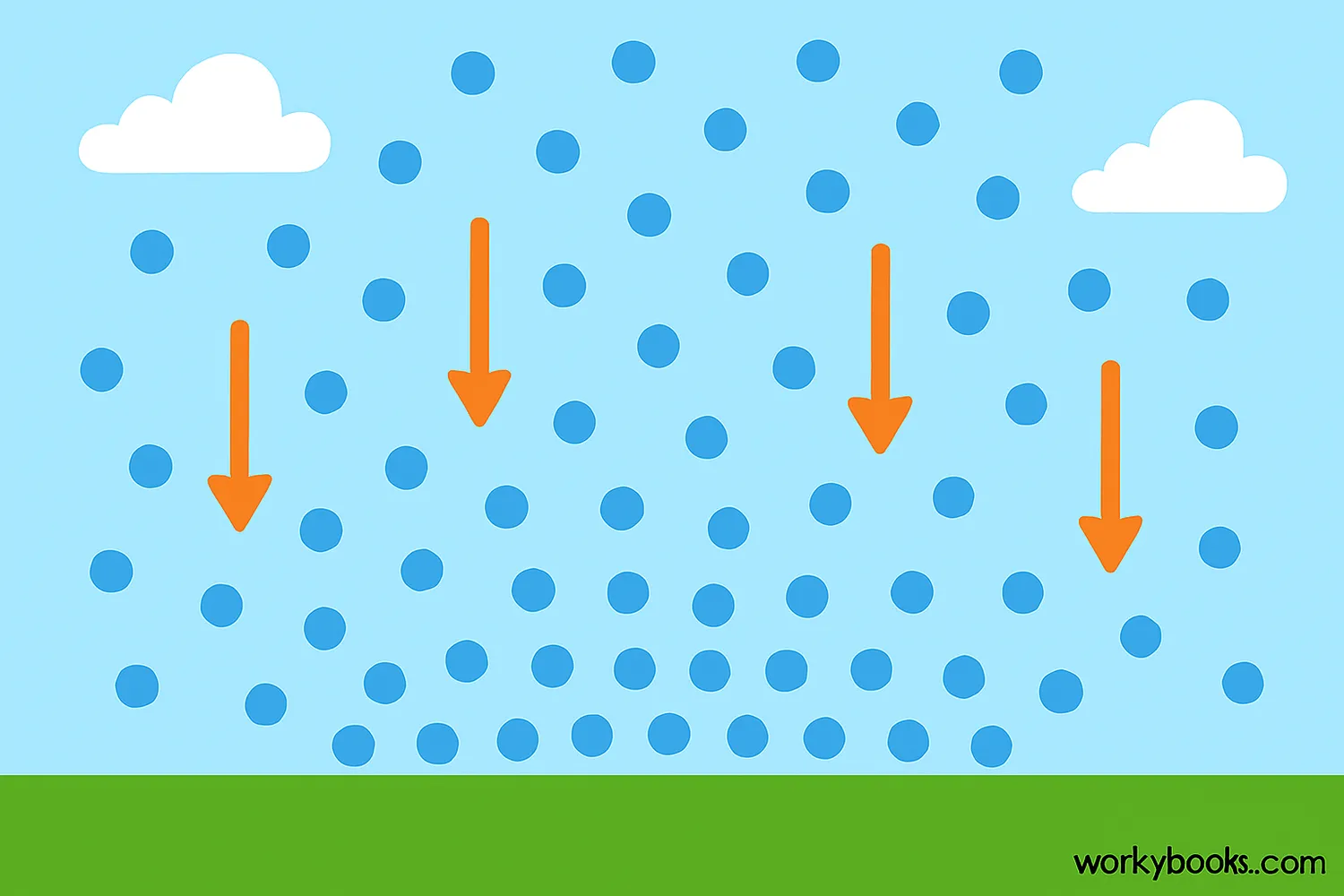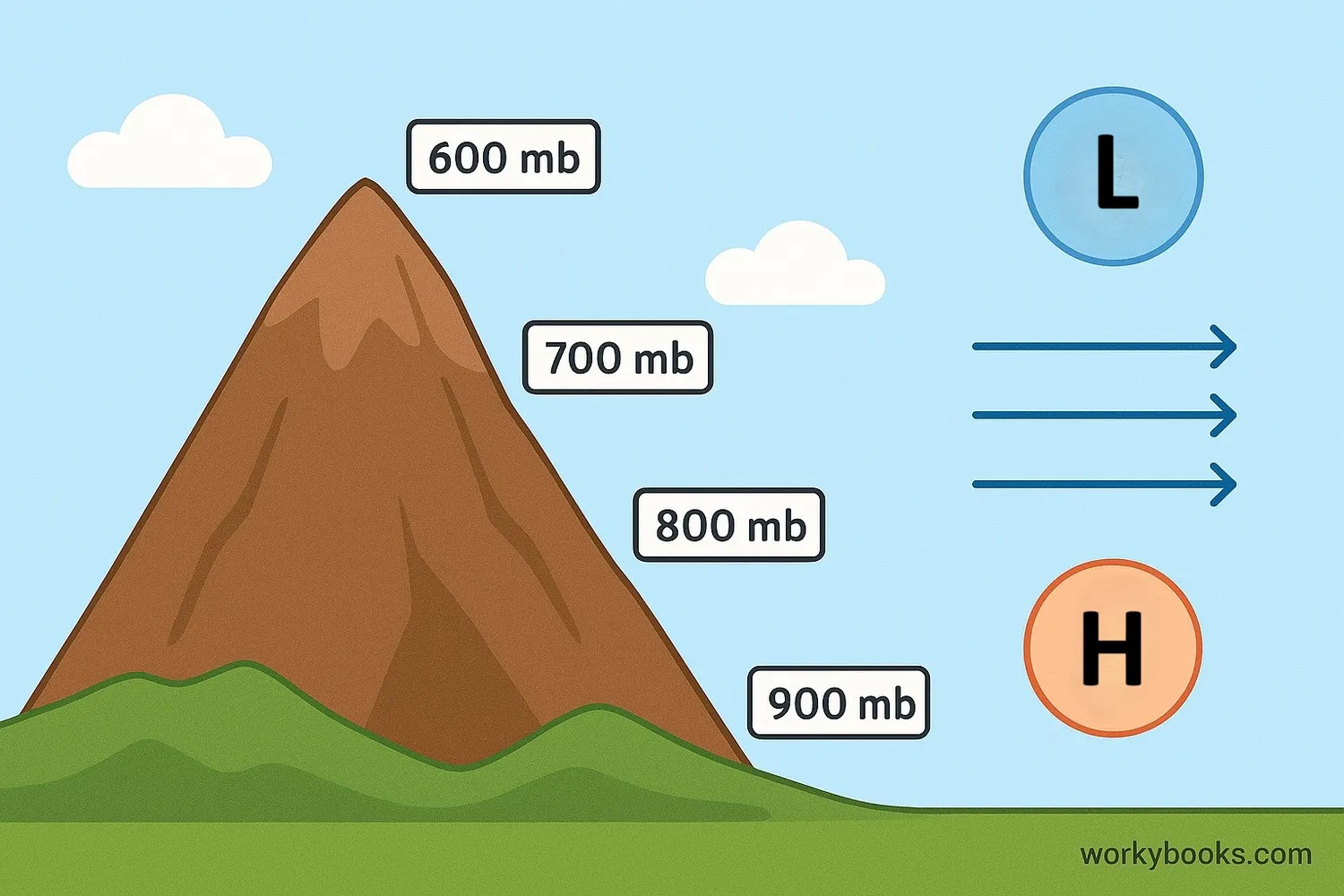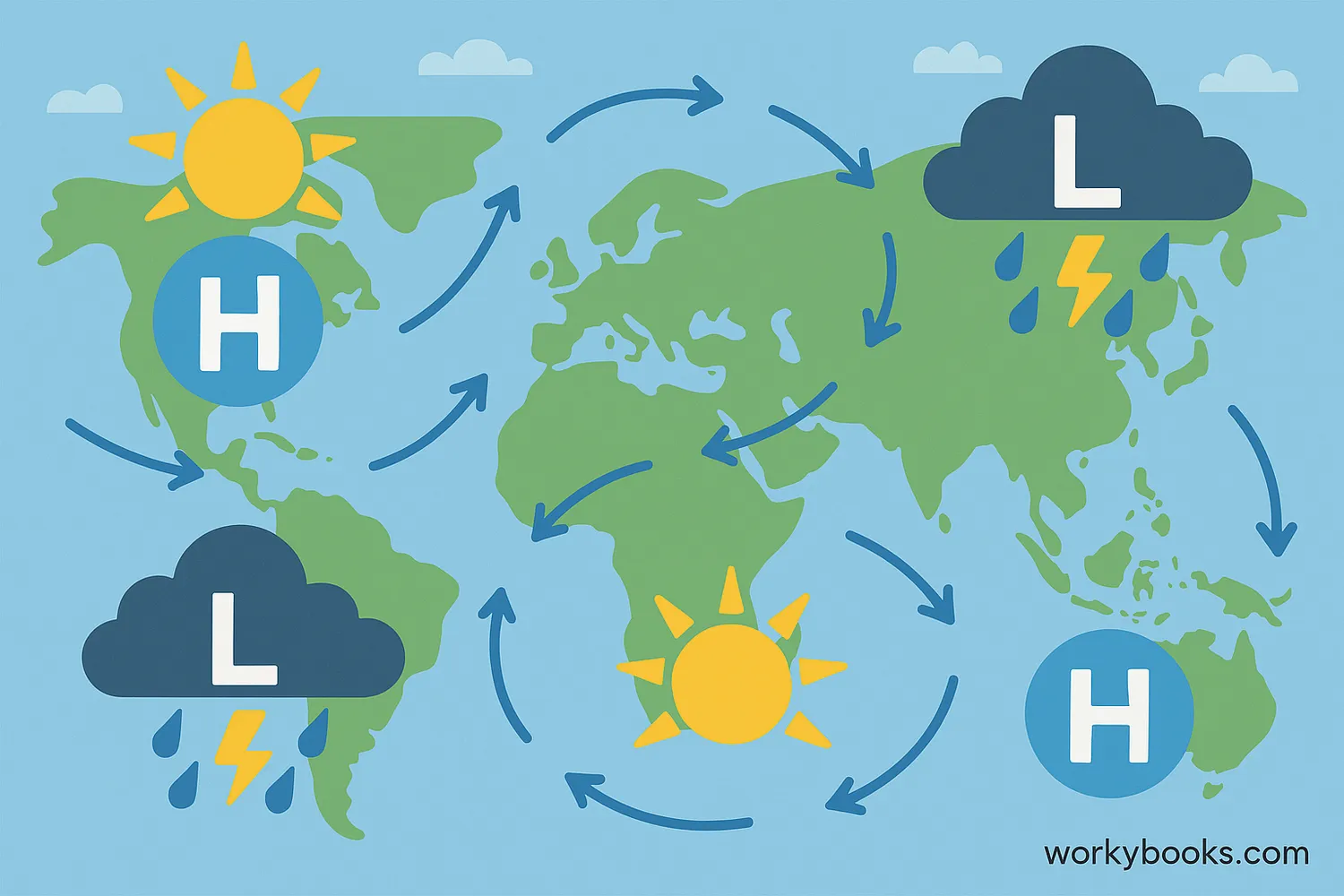Air Pressure - Definition, Examples, Quiz, FAQ, Trivia
Discover the invisible force that shapes our weather and affects our daily lives!
What is Air Pressure?

Air pressure is the weight of air pressing down on Earth's surface and everything on it. Even though we can't see air, it's made of tiny molecules that have weight. The atmosphere is like an ocean of air above us, and at sea level, all that air above us creates pressure!
Key facts:
• Air pressure is also called atmospheric pressure or barometric pressure
• At sea level, air pressure is about 14.7 pounds per square inch
• We measure air pressure using a barometer
• Standard air pressure at sea level is 1013 millibars or 29.92 inches of mercury
Science Fact!
The weight of air above you is equal to about 1 ton (like a small car) pressing on your body! You don't feel it because your body pushes back with equal pressure.
How Air Pressure Works

Air pressure changes based on several factors:
1. Altitude: Air pressure decreases as you go higher. That's because there's less air above you pressing down. On mountain tops, air pressure is much lower than at sea level.
2. Temperature: Warm air is lighter and rises, creating low pressure areas. Cold air is heavier and sinks, creating high pressure areas.
3. Weather Systems: Meteorologists track high and low pressure systems to predict weather. Air moves from areas of high pressure to areas of low pressure, creating wind!
Measuring Pressure
Barometers measure air pressure in millibars or inches of mercury
High Pressure
Associated with clear skies and calm weather
Low Pressure
Associated with clouds, wind, and precipitation
Pressure Gradient
The change in pressure over distance creates wind
Altitude Effects
Pressure decreases about 1 inch of mercury per 1000 ft elevation gain
Your Body Knows!
Have your ears ever "popped" in an airplane or elevator? That's your body adjusting to changing air pressure!
Why Air Pressure is Important

Air pressure affects our world in many important ways:
Weather Forecasting
Meteorologists track pressure systems to predict weather changes
Wind Creation
Air moves from high to low pressure, creating wind
Altitude Effects
Pressure changes affect cooking, breathing, and weather at different elevations
Weather Patterns: High pressure usually means sunny, clear skies. Low pressure often brings clouds, wind, and precipitation. When you see a weather map, the "H" and "L" symbols show high and low pressure centers.
Daily Life: Changes in air pressure can affect how you feel. Some people get headaches when pressure drops before a storm. Air pressure also affects how planes fly, how we breathe at high altitudes, and even how we cook food!
Air Pressure Quiz
Test your air pressure knowledge with this quiz! Answer all 5 questions to see how much you've learned.
Frequently Asked Questions
Here are answers to some common questions about air pressure:
Fun Air Pressure Trivia
Discover some amazing facts about air pressure!
Record Measurements
The highest air pressure ever recorded was 1084 millibars in Siberia, Russia. The lowest was 870 millibars during Typhoon Tip in the Pacific Ocean!
Bird Advantage
Birds use air pressure differences to soar for hours without flapping their wings. They find rising columns of warm air called thermals to gain altitude effortlessly!
Martian Pressure
Air pressure on Mars is less than 1% of Earth's! That's why astronauts would need special pressurized suits to survive on the Red Planet.
Historical Invention
The first barometer was invented by Evangelista Torricelli in 1643. He discovered air pressure by filling a tube with mercury and inverting it into a bowl!


